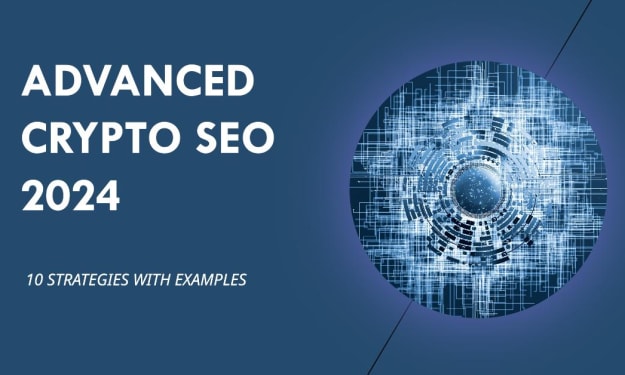
The story of Pablo Escobar is a long and sad one, as it's the story of a man who had control over every part of life and death in Colombia. The same way he had total control over the country, he also had complete control over his drug empire. This is what earned him the name 'The King of Cocaine'.
Early Life Of Pablo Escobar
Pablo Escobar was born on July 24, 1949, in Rionegro, Colombia. His parents were Natalio Bustos and Victoria Maria Hernández. Pablo was raised by his grandmother and aunt after his mother died at a young age from tuberculosis.
He grew up in Medellín, Colombia's second-largest city, where he lived with his grandmother and aunt until he moved to the city of Bogotá when he was 11 years old. There, he attended elementary school until the age of 15.
Escobar later attended secondary school at the National University of Colombia and studied law for two years before dropping out because he wanted to become a mechanic or an architect.
Criminal Career Of Pablo Escobar
Born in Rionegro, Colombia, Pablo Escobar was the son of a poor farmer who had little education and worked as a tractor driver. He left school at the age of 14 to help on the family farm.
He soon moved to Medellín to work as an enforcer for the local drug lord Jorge Ochoa. In 1970, he was arrested for a minor crime but was released after paying his fine. From then on, he was known as "Pablo Escobar" ("Pablo the Accountant").
In 1973, Escobar began working with another drug dealer named Rafael Caro Quintero. They were later joined by Diego Murillo Bejarano, who became known as "Don Berna." In 1975, they began importing cocaine from Bolivia into Colombia for distribution throughout Latin America.
The group's profits grew so much that they decided to sell their product directly to U.S.-based drug traffickers rather than carry it through intermediaries such as Luis Carlos Galan or Jorge Luis Ochoa Carrillo (the "King of Coke").
Escobar started using cocaine himself in 1978, which led him away from his strict moral code and towards a life of crime; he developed an appetite for risk-taking and violence that would.
1. Distribution of cocaine
The cocaine trade was the reason for Pablo Escobar's rise to power. It is estimated that after his first shipment of cocaine, he was making $50 million a month in profit. This allowed him to build a large drug empire that stretched from Colombia to the United States and Europe.
In Colombia, cocaine use grew exponentially between 1985 and 1989. By 1990, Colombia had become the world's largest producer of coca leaves and cocaine hydrochloride (the raw material used in manufacturing). As demand increased, so did prices—from $500 per kilogram in 1981 to $2,000 by 1985. Throughout this period (and beyond), Escobar expanded his operations rapidly; by 1992, he controlled an estimated 40% of the world's total production of cocaine hydrochloride—worth about $4 billion at that time.
2. Medellin Group
The Medellin Cartel was a drug trafficking organization and criminal empire based in Colombia. It was the most powerful South American drug cartel, controlling cocaine trafficking in all of North America and Europe. The cartel's influence spanned from Colombia to Panama and Venezuela, using various transportation routes such as the Caribbean Sea, South America's Pacific coast and the Panama Canal.
The cartel was founded in 1984 by José Pablo Escobar Gaviria (nicknamed "Pablo"), who became its undisputed leader. In addition to closely supervising his own drug trafficking activities, he also oversaw operations involving money laundering, racketeering and murder for hire. Pablo Escobar had many enemies within his organization due to his paranoia, extreme violence, demand for absolute loyalty and willingness to use threats against any member who opposed him.
The Medellin Cartel was one of the largest drug cartels ever created, with an estimated gross annual income of US$30 billion during the 1990s. Estimates suggest that Pablo Escobar alone earned $3 billion per year from cocaine sales.
3. Drug Networks
Pablo Escobar was a Colombian drug lord and one of the most notorious criminals in history. He started out as a supplier for Medellin cartel, but soon took over for his namesake, who was killed by the Colombian National Police in 1993.
The money that Pablo earned from cocaine trafficking helped him become incredibly powerful. He had an army of private security guards, known as "Pepes," that he hired to protect him. His drug business also gave him a lot of influence in Colombia's government and he even got political power through his relationship with Colombian President Cesar Gaviria.
In 1991, Pablo Escobar's brother, Roberto Escobar Gaviria, was murdered by Pablo's men while serving as minister of defense during El Espectador's administration. This led to an increase in violence against journalists at the time and caused President Cesar Gaviria to remove Roberto from office.
Pablo eventually lost control over Medellin cartel after the arrest of his friend Gilberto Rodriguez Orejuela on Drug Enforcement Administration (DEA) charges in 1991. His new boss was none other than Miguel Rodriguez Orej.
4. La Catedral prison for escobar
The first prison for Pablo Escobar was La Catedral. It was built in 1984 and was located in the city of Medellin, Colombia. The prison was built as a maximum-security facility with high security cells and even higher security measures. The prison's design included razor wire, CCTV cameras, and armed guards.
The prison's design made it one of the most secure prisons in the world at the time it was built; however, this did not stop Escobar from escaping from La Catedral. He escaped on three separate occasions beginning in 1985 until his capture in 1993.
Escobar's second escape from La Catedral occurred in 1992 when he walked out an open door at approximately 4:30 a.m., unnoticed by guards who were asleep after finishing their shifts. He made his way through several other security checkpoints before reaching a gate which he opened using a pair of pliers that he had been hiding under his shirt sleeve during previous searches. The gate was then left unlocked so that he could return through it later when it would be closed again for another shift change at 6:00 pm.
Death Of Pablo Escobar

Pablo Escobar, the Colombian drug lord and billionaire, was killed in a military raid on his villa in Medellin on 2 December 1993. His death came after a fierce turf war with rival drug lords.
The operation to kill Escobar was led by Jorge Luis Ochoa, who had taken over as chief of the Colombian National Police (CNP) soon after President Cesar Gaviria took office in 1990. It was carried out in the early hours of 3 December with the help of Colombian Special Forces and US Navy Seals who had been trained by their American counterparts. The operation involved helicopters, heat-seeking missiles, grenades and other weapons.
Escobar's death brought an end to one of the most ruthless drug wars in history. He had become one of the wealthiest men in the world thanks to his involvement with cocaine production and trafficking for more than two decades.






Comments
There are no comments for this story
Be the first to respond and start the conversation.